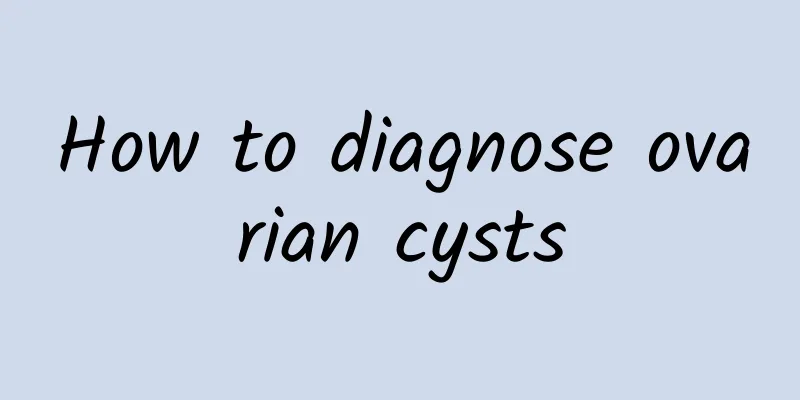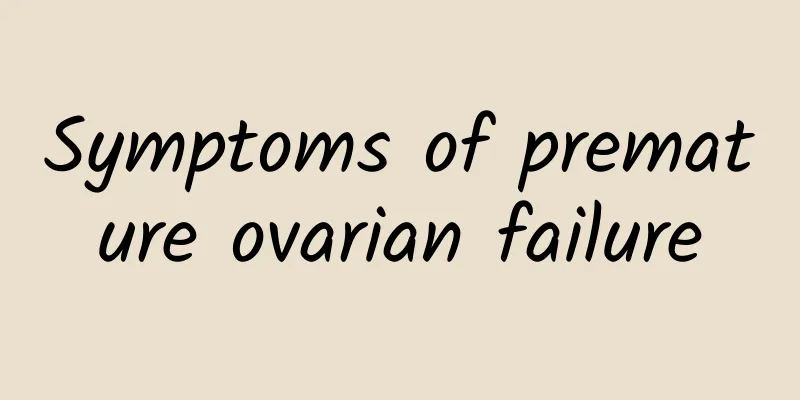How to diagnose ovarian cysts

|
How to diagnose ovarian cysts? We need to grasp the differential diagnosis of ovarian cysts. Only by grasping the differential diagnosis of ovarian cysts can we help everyone to correctly understand and distinguish, so as to come up with accurate treatment methods. So what exactly does the differential diagnosis of ovarian cysts contain? Let us interpret it in detail below. Differential diagnosis of ovarian cysts: 1. Functional ovarian cyst: This is the most common cyst. It occurs in women of childbearing age during the ovulation cycle. An abnormal amount of fluid accumulates in the follicle or corpus luteum, forming a follicular cyst or corpus luteum cyst. This functional cyst can sometimes be very large, but regardless of whether medication is used or not, it usually disappears on its own within three months. 2. Hemorrhagic ovarian cysts: Sometimes follicular cysts and corpus luteum cysts grow too fast, causing the ovarian tissue to tear and bleed. The blood accumulates in the ovary because there is no outlet, which is called a hemorrhagic cyst. This type of cyst usually disappears on its own, but it takes a long time. If the physical discomfort is more obvious, you can take medicine to alleviate the symptoms. Only in a few cases, when the patient presents more serious symptoms, surgery is required. 3. Serous epithelial cysts and mucinous epithelial cysts: After three months of observation, the cysts that still exist may be epithelial ovarian cysts rather than functional cysts. This is because the serous cells and mucinous cells with secretory functions are buried in the ovaries after ovulation, and they continuously secrete fluid to form cysts. This type of cyst will not disappear and needs to be removed surgically. 4. Chocolate cyst: refers to endometriosis growing in the ovaries, forming a large amount of sticky coffee-colored liquid like chocolate in the ovaries. Because endometriosis will grow larger over time, it will gradually erode normal tissues and cause irreversible damage to ovarian tissues. After evaluating its severity, surgery may be required. 5. Teratoma: This is a very special cyst. It may be a problem with cell differentiation during the embryonic period, and it takes a long time to show up. It will form a collection of hair, teeth, and some oils in the ovary. Since the teratoma itself will not disappear on its own and may continue to grow, and there is a 15% chance of causing ovarian torsion, it is best to remove it as soon as possible. Generally speaking, the rate of malignancy is less than one in a thousand. 6. Ovarian cancer: The chance of developing ovarian cancer is quite low, but because it is located in the pelvic cavity, it is not easy to detect early. 7. Endometrioid tumor: The surface of the tumor is smooth and is often single-chambered. Its inner wall is composed of a layer of tall columnar epithelium that is very similar to the endometrium. The surrounding connective tissue lacks endometrial stroma, and there is no bleeding inside or outside the cyst. |
<<: Will I die from ovarian cysts?
>>: How to check ovarian cysts
Recommend
Which is less harmful, medical abortion or surgical abortion? What is the best method?
For women who do not have a birth plan, if they a...
Recurrent endometrial tuberculosis requires attention to diet
Many women who have undergone intrauterine surger...
Experts explain what are the main causes of cervical hypertrophy
Cervical hypertrophy is a common gynecological di...
What is the best way to treat cervical erosion?
Cervical erosion, now more commonly known as cerv...
What are the causes of threatened miscarriage?
Threatened abortion occurs before 28 weeks of pre...
How to prevent bacterial vaginosis
Bacterial vaginosis is a common gynecological dis...
What are the symptoms and signs of ectopic pregnancy?
What are the symptoms and signs of ectopic pregna...
What are the dietary principles for irregular menstruation?
Irregular menstruation is a common gynecological ...
The most valuable auxiliary examination for threatened abortion
Every pregnant mother wants to give birth to a he...
3 steps to diagnose cervical erosion
Cervical erosion is a gynecological disease that ...
Analysis of precautions for preventing cervical erosion
In order to effectively prevent cervical erosion,...
Does cervical warts affect female pregnancy?
Cervical warts are a highly contagious malignant ...
There are many good ways to prevent cervical hypertrophy in life
At present, the incidence of cervical hypertrophy...
What are the symptoms of female cervical erosion? Can female cervical erosion heal itself?
What are the symptoms and phenomena of cervical e...
How to treat uterine fibroids better? Common treatment methods for uterine fibroids
Nowadays, women are also very concerned about the...









